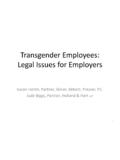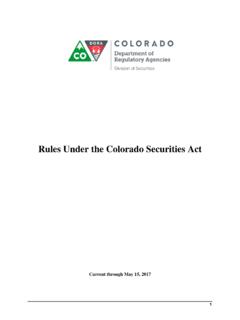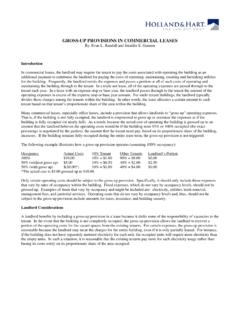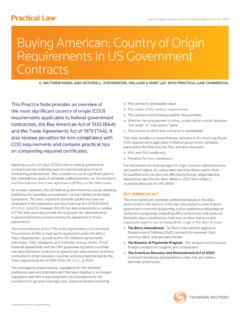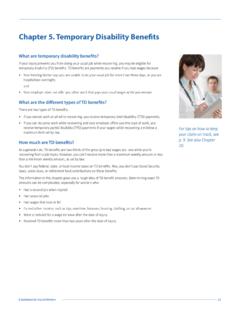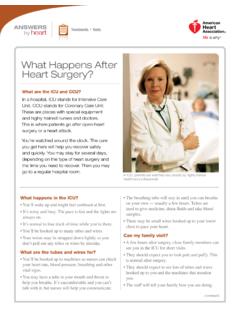Transcription of Inventorship: What Happens When You Don’t Get …
1 1 inventorship : what Happens when You Don t Get It Right? Donald A. Degnan Libby A. Huskey HOLLAND & HART LLP Copyright 2006 Holland & Hart LLP I. Introduction inventorship of a patent is central to the United States patent system. It identifies who conceived the invention and, if incorrect, jeopardizes the validity of the patent. Today, where collaborative research among a variety of entities is common, it is increasingly typical to have more than one inventor contributing to the patented invention, escalating the burden of identifying all proper inventors.
2 This collaborative environment changes the landscape of protecting clients patent rights, in both patent applications and issued patents as well as the attendant assignment and license agreements that define clients patent ownership rights. This paper first describes the differences between patent inventorship and ownership and then focuses on inventorship errors, how they arise, how they can be corrected, and the practical consequences of inventorship errors that occur regardless of whether those errors can be corrected or not.
3 II. Ownership v. inventorship A. The Difference Between Ownership and inventorship inventorship and ownership are separate and distinct concepts. inventorship arises from the conception of an invention. An inventor is a natural person who formulates a definite and permanent idea of the claimed invention as it is thereafter reduced to There can be several joint inventors so long as each contributes to the conception of the claimed An inventor cannot be a corporation or any other business entity, an assignee, the supervisor or manager of the inventor(s), or one who merely reduces the invention to practice, carries out the inventor(s)
4 Instructions, or merely discovers (but does not solve) a problem. Patent ownership, on the other hand, is derived from fundamental property law and follows inventorship . Ownership of a patent or patent application initially vests in the named inventors of the invention of the patent, or the inventor is considered the owner unless and until he transfers his interest to Only the inventor and/or those who derive title from the 1 MPEP 2 35 116.
5 3 MPEP 301 (citing Beech Aircraft Corp. v. EDO Corp., 990 1237, 1248 (Fed. Cir. 1993)). See also 37 (a) ( The inventor is presumed to be the owner of a patent application, and any patent that may issue therefrom .. ). 2inventor may own a patent or patent application. An owner may be a natural person or a business or government entity, and as with inventors, there may be several joint owners. As a default rule, a patent attorney or agent is neither an inventor nor an owner.
6 While drafting a patent application and/or maintaining a patent through the United States Patent & Trademark Office requires intimate knowledge and understanding of the invention at hand, it does not rise to the level of an inventive contribution. In Solomon v. Kimberly-Clark Corp., an alleged infringer attempted to invalidate a patent under 35 102(f) for incorrect inventorship , claiming the patent attorney was the true inventor. The Federal Circuit ostensibly concluded that, as a matter of law, a patent attorney can never be an inventor in a patent he is This is because a patent attorney s role is to help his client define its invention to obtain maximum patent coverage, a role that should not force the patent attorney to compete with the client or force it to assert inventorship as a result of representing the As for patent ownership.
7 A patent attorney may receive a reasonable contingent interest in the patent as payment for his Absent such an agreement, however, the patent attorney has no ownership interest in the patent. B. Transfer of Patent Ownership Rights Generally, patent ownership rights are transferred contractually through a patent assignment For example, employment agreements often contain intellectual property assignment provisions. Employers acquire ownership rights in their employees patentable work product through these express assignments, not through the mere existence of the employer/employee relationship.
8 Because an individual inventor may only assign his own interest, assignment by a single joint inventor renders a subsequent assignee a partial assignee, or joint owner. Likewise, a partial assignee may only assign the interest it holds, making a subsequent assignee a joint owner, and so There are two instances in which patent rights may transfer by operation of law, rather than through express agreement. First, under the hired to invent doctrine, a hiring party will own the rights to an invention without an express assignment agreement if the inventor was hired to invent the invention at This concept is often confused with the situation in which an employee invents an invention within the scope of his employment, even though the employee was not actually hired to invent anything at all, or more specifically.
9 Was not hired to invent the specific invention at issue. An example exists in a lab technician hired to calibrate sensitive laboratory equipment. The technician s work requires him to use existing equipment and apply known testing methods 4 Solomon v. Kimberly-Clark Corp., 216 1372, 1382 (Fed. Cir. 2000). 5 Id. 6 37 7 35 261 (stating that patents have the attributes of personal property and that interests in patents or patent applications are assignable by an instrument in writing).
10 8 MPEP 301. 9 See Wommack v. Durham Pecan Co., Inc., 715 962, 965 (5th Cir. 1983). 3and generally requires nothing inventive. During the course of his employment, the technician invents an improvement to the calibration device. Because he was not specifically hired to invent anything, or in particular, because he was not hired to improve upon the existing calibration device, it is likely that the employer cannot obtain ownership rights in the improved device.
